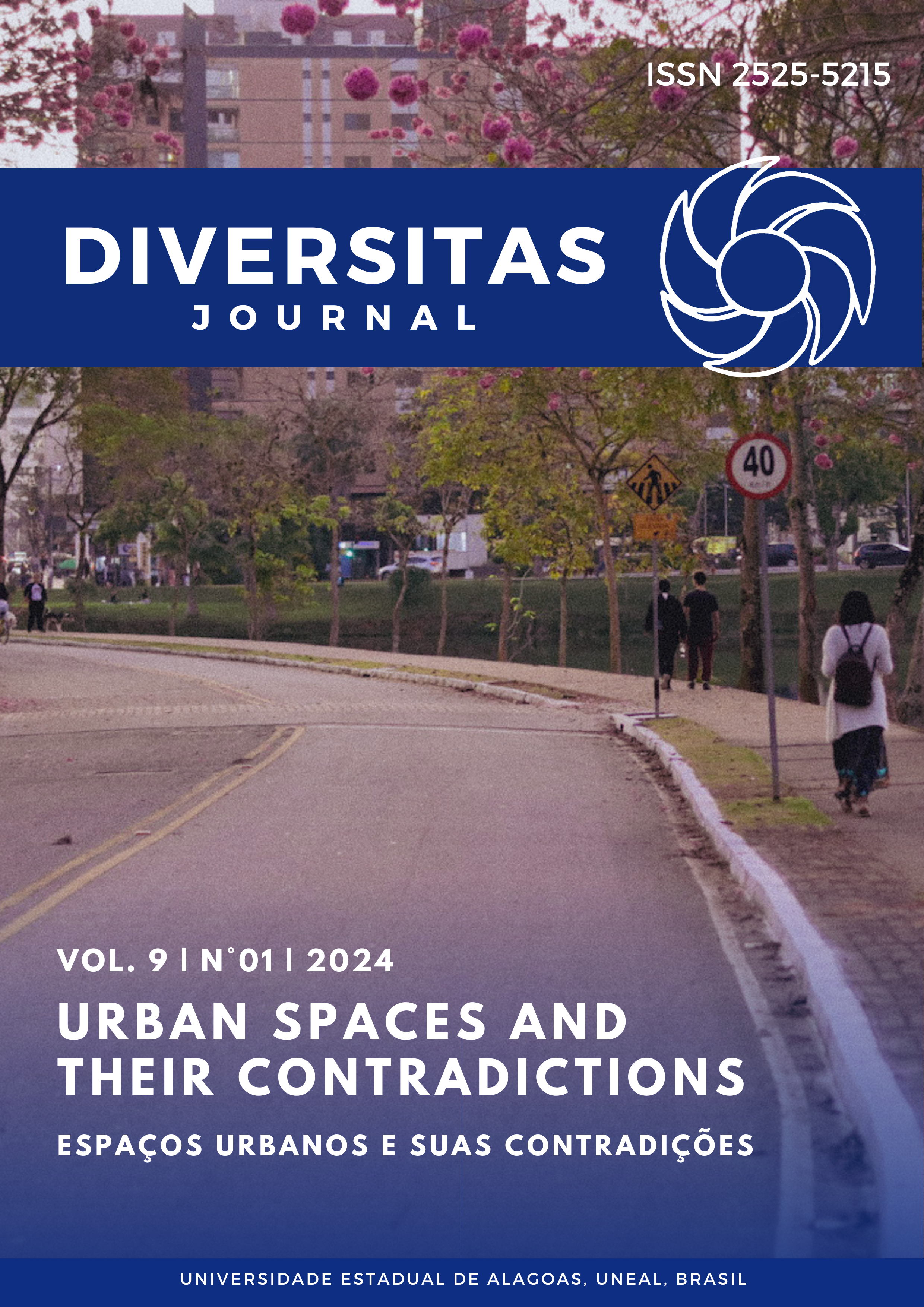Modified Mangrove Pens for Polyculture System in Mud Crab (Scylla serrata)and Milkfish (Chanos chanos)Production
DOI:
https://doi.org/10.48017/dj.v9i1.2560Keywords:
Aquasilviculture, dissolved oxygen, mangroves, recoveryAbstract
The mangrove pens were modified to produce mud crab (Scylla serrata)and milkfish (Chanos chanos)in a polyculture system. The modification of mangrove pens was done by adding excavations inside the pen. The water quality parameters (dissolved oxygen (DO), pH, salinity, and temperature) were monitored, and the recovery and production rates in each penwere evaluated. The experiment was conducted for a rearing period of 143 days in nine mangrove pens, each having an area of 32 m2and an average net enclosure height of 3 m from the soil surface. The three different pens constructed (existing design: canal only, 43% excavation by area, and 54% excavation by area) were designated as T1, T2, and T3, respectively. The water quality parameters recorded in the pens were favorable for the growth and recovery of the mud crab and milkfish, except for DO. For mud crab, the highest mean recovery was recorded in T2, followed by T3,and the lowest in T1. The production rate followed the same pattern as the recovery, with T2having the highest, followed by T3, and T1having the lowest. The statistical analysis revealed that the variations in mud crab recovery were not significant, while in terms of production rate, modified mangrove pens were found to be more effective than the existing design. Due to the total mortality of the cultured milkfish, the current set-up of modified mangrove pens was found to be unsuitable for the polyculture system of milkfish and mud crab production.
Metrics
References
Baliao, D. D., de los Santos, M. A., & Franco, N. M. (1999).Pen culture of mudcrab in mangroves. Aquaculture Department, Southeast Asian Fisheries Development Center.
Bureau of Fisheries and Aquatic Resources. (2007). Manual for bangusculture in pond.
Cholik F., & Hanafi A. (1992). A review of the status of the mudcrab (Scylla spp.)hatchery and culture in Indonesia. In C.A. Angell (Eds.), The Mudcrab (pp. 13-28).
Bay of Bengal Programme. Brackishwater Culture GCP/RAS/118/MUL.
Eakin, H. M. (2020). Silting of Reservoirs 1. InEnvironmental Geomorphology and Landscape Conservation(pp. 87-102). Routledge.
Fatihah, S. N., Julin, H. T., & Chen, C. A. (2017). Survival, growth, and molting frequency of mud crab Scylla tranquebarica juveniles at different shelter conditions.Aquaculture, Aquarium, Conservation & Legislation,10(6), 1581-1589.
Food and Agriculture Organization (1983). Fishpond Engineering: A technical manual for small-and medium-scale coastal fish farms in Southeast Asia.
Genodepa, J. G. (1999). Pen culture experiments of the mud crab Scylla serrata in mangrove areas. InACIAR PROCEEDINGS(pp. 89-94). AUSTRALIAN CENTRE FOR INTERNATIONAL AGRICULTURAL.
Giri, C., Ochieng, E., Tieszen, L. L., Zhu, Z., Singh, A., Loveland, T., ... & Duke, N. (2011). Status and distribution of mangrove forests of the world using earth observation satellite data.Global Ecology and Biogeography,20(1), 154-159.
Guerrero III, R. D. (2008). Eco-Friendly Fish Farm Management and production of safe aquaculture foods in the Philippines.Philippine Council for Aquatic and Marine Research and Development and Food Fertilizer Technology Center for Asian and Pacific Region.
Hassea, R., Codabaccus, B., Rathacharen, S., & Khadun, S. (2005). Some results of the study on rearing of mangrove crab Scylla serrata juveniles in the barachois of Mauritius.
Hudson, N. W. (2015).Soil conservation. Scientific Publishers.
Ibanez, J.G., Serano, J.G., Singh, M.M., Esparza, M.H., & Infante, A.F. (2008). Dissolved Oxygen in Water. Environmental Chemistry, Chapters: 6, 7, 8.
Long J., Napton, D., Giri, C., & Graesser, J. (2013). A mapping and monitoring assessment of the Philippines’ mangrove forests from 1990 to 2010. J. Coastal Research.DOI. 10.112/JCOASTRES-D-13.00057.1
Mwaluma J. (2003). Culture experiments on the growth and production of mud crabs, mullets, milkfish and prawns in Mtwapa mangrove system, Kenya. MSRG I Research Project Report,pp-26. www.wiomsa.org.
Primavera, J.H. (1995). Mangroves and brackishwater pond culture in the Philippines. Hydrobiologia, 295, 303–309.
Primavera, J.H. (2000). Integrated Mangrove-Aquaculture Systems in Asia. Integrated Coastal Zone Management (Autumn Edition), 121-130.
Primavera, J. H., Binas, J.B., Tan, G. P., Lebata, M.J., Alava, V.R., Walton, M. & Levay, L. (2009). Mudcrab pen culture –replacement of fish feed requirement and impacts on mangrove community structure. Aquaculture Research. doi: 10.1111/j.1365 -2109.2009.02408.
Rani Saha, M., Roy, P.K., & Ahmed, S.U. (2016). Impact of stocking density on growth and survival rate of mudcrab (Scylla serrate froskal). Fish. Res., 1 (1), 47-52.
Shelley, C. & Lovatelli A. (2011). Mudcrab aquaculture: A practical manual. Food And Agriculture Organization of the United Nations.
Spalding M., Kainuma, M., & Collins, L. (2010). World Atlas of Mangroves, 319 pp.
Spalding, M., Blasco, F., & Field, C. (1997). World Mangrove Atlas, 178 pp.
Yap, W.G., Villaluz, A.C., Soriano, M.G., & Santos, M.N. (2007). Milkfish production and processing technologies in the Philippines. Milkfish Project Publication Series No. 2, 96 pp.
Downloads
Published
How to Cite
Issue
Section
License
Copyright (c) 2024 Laurence Almoguera, Vitaliana Malamug, Armando Jr. Espino, Marvin Cinense

This work is licensed under a Creative Commons Attribution 4.0 International License.
The Diversitas Journal expresses that the articles are the sole responsibility of the Authors, who are familiar with Brazilian and international legislation.
Articles are peer-reviewed and care should be taken to warn of the possible incidence of plagiarism. However, plagiarism is an indisputable action by the authors.
The violation of copyright is a crime, provided for in article 184 of the Brazilian Penal Code: “Art. 184 Violating copyright and related rights: Penalty - detention, from 3 (three) months to 1 (one) year, or fine. § 1 If the violation consists of total or partial reproduction, for the purpose of direct or indirect profit, by any means or process, of intellectual work, interpretation, performance or phonogram, without the express authorization of the author, the performer, the producer , as the case may be, or whoever represents them: Penalty - imprisonment, from 2 (two) to 4 (four) years, and a fine. ”


















